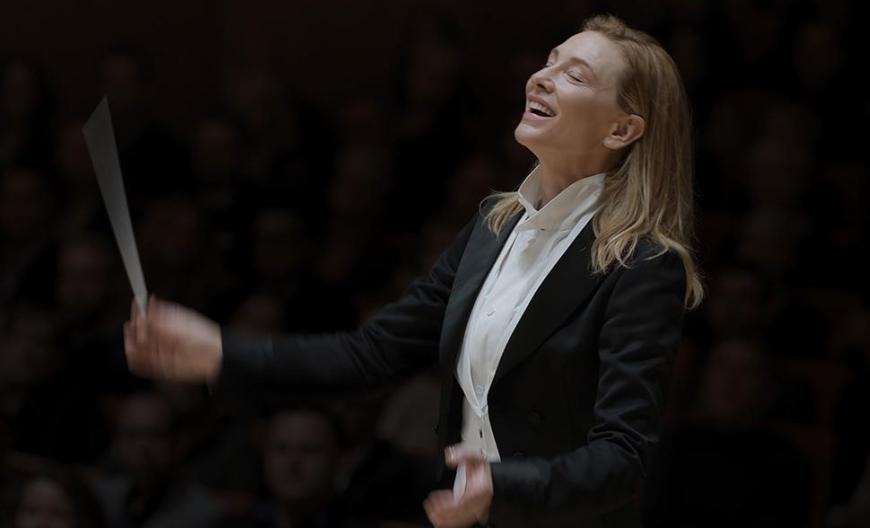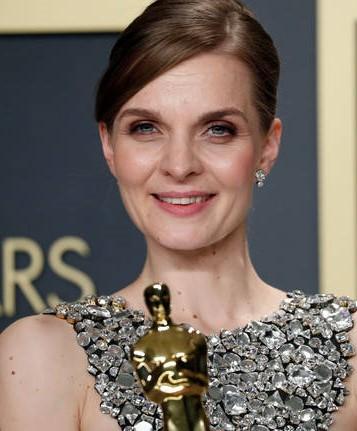
Move over Mozart in the Jungle, never mind Marin Alsop and The Conductor — Tár will be all around us for months. The film, to be released in select theaters on Oct. 7 and nationwide Oct. 28, will have a Deutsche Grammophon recording (really) and could be a favorite come awards season.
Whatever the fictional character of Lydia Tár may do to spread the word about symphonic music and women on the podium, a certain value from the film is Hildur Guðnadóttir’s music, along with a good chunk of Mahler’s Fifth Symphony.
Set in the international world of classical music, Tár centers on its eponymous character, “widely considered one of the greatest living composer-conductors and the first-ever female chief conductor of a major German orchestra.”
This writer’s experience with the “greatest living” genre began in 1950, with Roberto Benzi headlining Prélude à la gloire (U.S. title: The Little Conductor), ruining the bloated Franz Liszt Les préludes for life. For many balletomanes, 2010’s Black Swan popularized ballet “the wrong way” with tabloid sensationalism. Be warned.

From writer and director Todd Field and starring Noémie Merlant, Nina Hoss, Sophie Kauer, Julian Glover, Allan Corduner, and Mark Strong, the film received a rave review from Variety:
“The movie is breathtaking — in its drama, its high-crafted innovation, its vision. It’s a ruthless but intimate tale of art, lust, obsession, and power. It’s set in the contemporary classical-music world, and if that sounds a bit high-toned (it is, in a good way), the movie leads us through that world in a manner that’s so rigorously precise and authentic and detailed that it generates the immersion of a thriller.”
A fictional interview in the introductory scene describes the film’s star: “As a conductor, Tár began her career with The Cleveland Orchestra, Chicago Symphony Orchestra, the Boston Symphony Orchestra, until she at last arrived here at our own New York Philharmonic.”
According to Classic FM, “the story summary frames itself as if Lydia Tár is a real-life icon that everyone should be familiar with prior to seeing her story in a feature film, but Tár is an entirely fictionalized story. Perhaps this is the biggest hint so far that the film will be something of a commentary on the way we look at artists and celebrities, taking a deep dive into their creative process and the effects that their dedication can have on their mental health and psyche.
“Ultimately a lot of that is guesswork [because] the trailer is almost deliberately very vague. … Still, we can infer that the character of Lydia Tár, like many of history’s greatest creative minds, will be a staunch perfectionist who will struggle to find a healthy balance between her musical life and her personal life.”
Among those who have already seen the film is famed silent-film musician Donald Sosin, who writes:
“It’s a fascinating film, whatever one thinks of the gender politics. The discussions of music are brilliantly done, deeper than any other narrative film I can think of. And she is a credible conductor. Very worthwhile seeing.”
Of gender politics, the Variety review says: “Lydia addresses the question of what it means to be a conductor who’s a woman — which, perhaps to our surprise, she treats as a total non-issue (as does the film), explaining that that road was paved long ago and that she now occupies the privileged position of not having to be defined, by her gender, as some sort of novelty act.”
“Non-issue”? Even in San Francisco, listing women conductors at SF Symphony and SF Opera through the years only adds up to a small percentage. Still, progress is real and promising to remedy the past’s wrongs.
Todd Field, Tár’s director, had this measured statement about the film’s star:
This script was written for one artist, Cate Blanchett. Had she said no, the film would have never seen the light of day. Filmgoers, amateur and otherwise, will not be surprised by this. After all, she is a master supreme.
Even so, while we were making the picture, the superhuman skill and verisimilitude of Cate was something truly astounding to behold. She raised all boats. The privilege of collaborating with an artist of this caliber is something impossible to adequately describe. In every possible way this is Cate’s film.”


